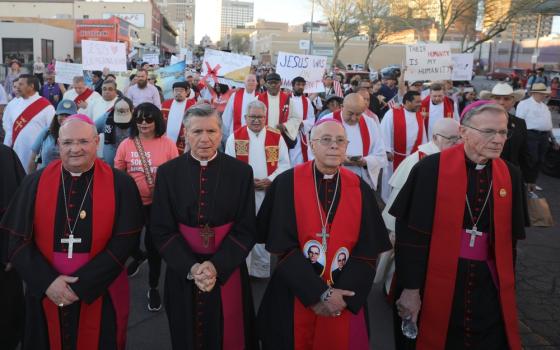Under new reporting procedures that are more in line with international accounting standards, the Holy See reported $1 billion in net assets that had never been reported before and in a consolidated form.
The Vatican's final figures for 2014 also showed a continued budget deficit on the part of the Roman Curia and nearly double the profits brought in by entities falling under the separate Vatican City State budget.
In fact, the profits coming from the Vatican Museums, "cultural activities" and investments offset the deficit in the consolidated budgets of the Roman Curia and Vatican communications outlets to help the Vatican end the year 37.9 million euros ($41.3 million) in the black.
The Council for the Economy presented the financial statements Tuesday, and they were published Thursday. The statements were prepared by the Prefecture for the Economic Affairs of the Holy See, the Vatican's budget management office. The statements were "reviewed and verified" by the Secretariat for the Economy, headed by Australian Cardinal George Pell, as well as by a brand new auditing committee of lay experts and an external auditor.
The 2014 budget reports were the first financial statements to follow sweeping new procedures begun under new rules that went unto effect March 1, governing the guidance, oversight and control of Vatican financial and administrative activities, and codifying the mission of the council and secretariat for the economy.
The summarized statement released by the Vatican press office Thursday offered much of the same kind of information included in past statements released each year, as the transition to the new procedures is still a "step-by-step" work in progress, Jesuit Fr. Federico Lombardi, Vatican spokesman, told reporters.
However, the one new figure released publicly was all the net assets of the Holy See. Totaling 939 million euros, the amount represents money that had never been included before in the Vatican's old system of budgeting and reporting.
In an interview in December, Pell said the new budgeting and reporting procedures had meant the secretariat discovered "some hundreds of millions of euros were tucked away in particular sectional accounts and did not appear on the balance sheet."
Lombardi explained to reporters the next day that the money did not represent "illegal, illicit or badly managed funds," just assets being held in numerous administrative offices that were not considered part of the main institutions of the Curia.
For 2014, however, all departments, bodies and foundations of the Holy See were required to report all assets -- which totaled 1.1 billion euros, and liabilities -- which totaled 222 million euros.
The budget of the Holy See, which is made up of 64 "entities," ended 2014 with a deficit of more than 25.6 million euros.
The new reporting and budgeting practices made it difficult to compare figures with past years, the Vatican statement said.
In fact, it said if the new practices had been applied to the 2013 fiscal year, the budget deficit for the Holy See would have been much higher -- 37.2 million euros, rather than the 24.4 million euros that had been reported. The reduced deficient for 2014, it said, was "largely due to favorable movements in investments held by the Holy See."
Other sources of income included contributions from dioceses around the world, which gave 21 million euro in 2014, down from 22 million the previous year. The Vatican bank, which donates profits from its investments to the pope to support works of charity and mission around the world, contributed 50 million euros, like past years.
The largest single item in the Holy See budget was "personnel." The number of employees stayed relatively the same at 2,880 with total personnel costs being 126.6 million euros, an increase of more than 1 million euros from 2013.
The Vatican City State budget, which includes the income-generating Vatican Museums and Vatican stamp and coin office, ended 2014 with a profit of more than 63.5 million euros -- nearly double the previous year's surplus of 33 million euros.
No personnel costs were given in the summarized report of the 1,930 total staff members who come under the Vatican City State budget.
Budget forecasts, with anticipated revenues and expenditures for the coming year, for the 136 entities under the council and secretariat's watch suggest "the deficits experienced in recent years are likely to continue in 2015," the Vatican statement said.
"While rapid progress is being made in implementing reforms requested by the Holy Father, the complete transition" to international accounting standards "is likely to take several years. The 2015 budgets and the 2015 statements are the first important steps."
"From 2015, the consolidated statements for the Holy See will include the new practices and additional entities, as required under the new financial management policies" in place at the Vatican and according to worldwide standards, it said.



